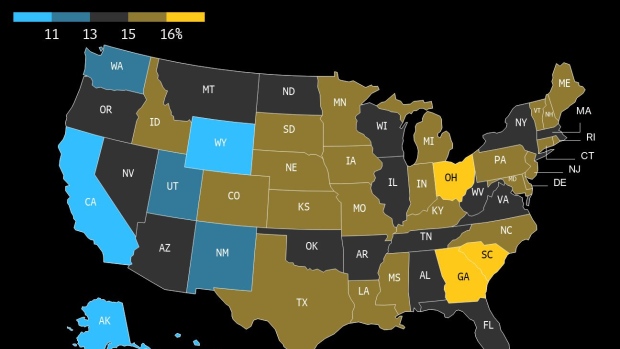Sep 27, 2022
US South to Get Most Relief From Biden’s Student-Debt Plan, NY Fed Says
, Bloomberg News

(Bloomberg) -- President Joe Biden’s loan-forgiveness plan will wipe out about one-third of student debt owed to the federal government, with lower-income borrowers and those living in Southern states getting the biggest boost, according to analysis by the Federal Reserve Bank of New York.
The proposal would eliminate federally-held balances for about 40% of borrowers, canceling $441 billion in loans, the New York Fed said in a blog post Tuesday. Borrowers living in neighborhoods with median household incomes below $83,000 -- which is some 65% of the total -- would receive almost three-quarters of the debt forgiveness, it said.
The Fed study also found that residents of Washington, DC, will get the biggest average amount of debt forgiven per eligible borrower. The six states with the largest amount are in the South: North Carolina, Georgia, South Carolina, Alabama, Mississippi, and West Virginia.
Biden’s plan offers forgiveness of up to $10,000 per borrower, with a household income threshold of $125,000 for eligibility. That cap excludes roughly one in 20 borrowers, the New York Fed said. Additional forgiveness is available for recipients of the Pell grants that help students with greater financial needs.
Critics of the plan, including Biden’s Republican opponents, say that debt relief for Americans who went to college -- and are therefore likely to earn more anyway -- is a policy that favors the wealthy.
Debt forgiveness will help struggling borrowers to boost their credit scores and catch up with other liabilities, like credit-card and auto loans, according to the New York Fed. “The reduction in student debt prevalence and balances will create a substantial financial improvement for borrowers, particularly among those with lower incomes,” it said.
Even after the plan is implemented, plenty of Americans will still have a sizable debt burden and will have to make substantial monthly payments when the pandemic freeze is due to end in January.
A report from the Federal Reserve Bank of Dallas, also published Tuesday, notes that the share of borrowers with more than $50,000 in student loans rose almost 5 percentage points to 21.4% in the five years through 2021.
©2022 Bloomberg L.P.





